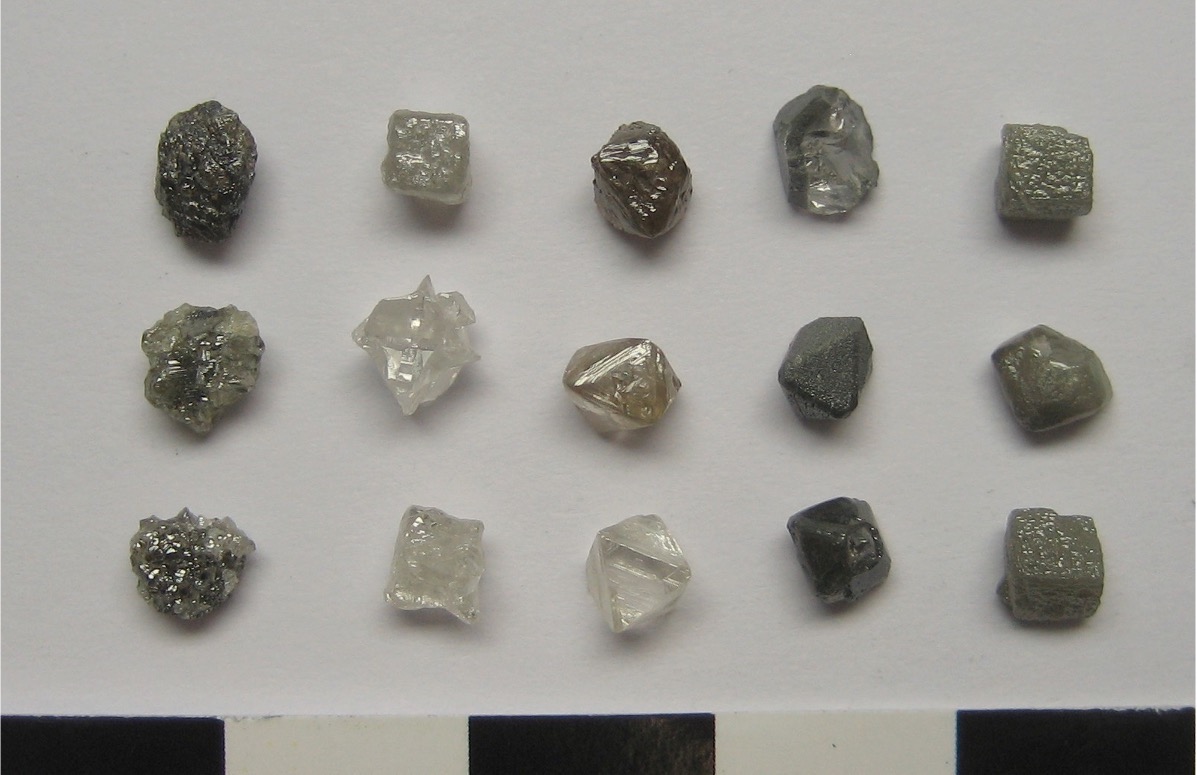Exploring for New Diamond Deposits
Dr. Evan M. Smith of GIA examines the ongoing challenge to find, evaluate, and develop the next generation of diamond deposits.
Gemological Institute of America
|
The diamond is a rare mineral in nature. Although it may not be difficult to find diamonds for sale in shops or perhaps set in your own or a friend’s jewelry, substantial efforts of modern exploration and mining underpin this apparent availability. Finding and identifying economically viable diamond deposits is not trivial. Each year, hundreds of millions of dollars are spent on such exploration activities around the globe. The process is slow and the chances of success are generally low.
For centuries, the only known diamond occurrences were among river sediments, called alluvial deposits. Today, the majority of mined diamonds are recovered from kimberlites, which are igneous rocks that sometimes pick up diamonds during their magmatic journey up to earth’s surface. In the illustration below, diamonds are shown at the base of the continental lithosphere, at a depth of about 150 to 200 km. Most mined diamonds (about 98%) are thought to have formed here, in old and thick parts of continents. They can reside in this deep setting for millions or even billions of years. The only way these diamonds make their way up to earth’s surface is if they are swept up in a kimberlite or less commonly a lamproite, which are special kinds of volcanic eruptions. Kimberlites and lamproites come from deep in the mantle and are very different from the more familiar types of volcanoes like those of the Pacific Ring of Fire or the volcanoes in Hawaii.
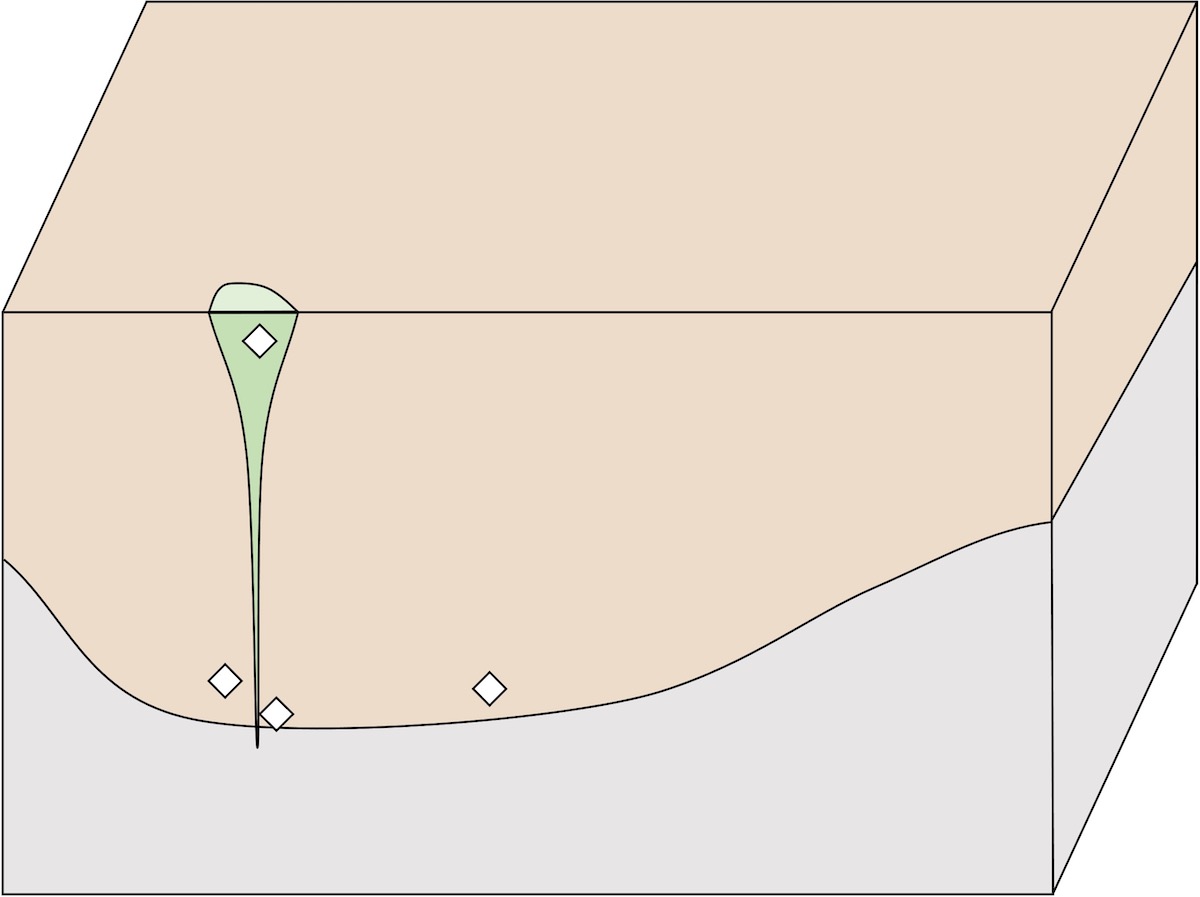
If a kimberlite collects diamonds as it erupts through the lithosphere, it also picks up fragments of the surrounding mantle rocks, shown as pink hexagons in the illustration above. These disaggregated mineral grains come from the same place where diamonds form, but are much more abundant than the diamonds themselves and can be used as “indicator minerals” during exploration. For example, the left image below shows an intact piece garnet-bearing peridotite, which is a type of mantle rock that diamonds often form in. The right image below shows one of these garnet indicator minerals that has been broken loose and swept up in a kimberlite. Vibrant purple garnets like these are sometimes called G10 garnets in exploration. The most important indicator minerals are chromium rich pyrope (G10 garnets), magnesiochromite, chromium rich diopside, picroilmenite, forsteritic olivine, and almandine-pyrope. Over time, as a kimberlite at surface erodes, the action of wind, water, and ice can transport the indicator minerals and deposit them at a distance, leaving clues about the presence of a potentially diamond-bearing kimberlite.
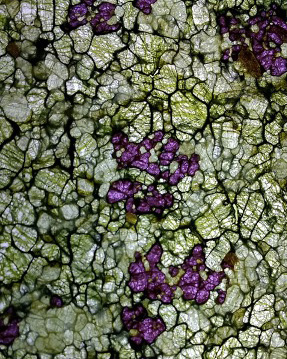
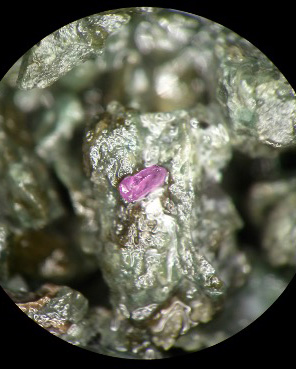
Generally, diamond exploration begins with the selection of a prospective area. The oldest and thickest parts of continents are seen as most promising because these are where diamonds have been found historically. Here, the lithosphere (crust and uppermost part of the mantle) is thick enough that that the base reaches into the diamond stability field, where carbon crystallizes as diamond rather than as graphite. Selecting a prospective area to explore in also depends on regional geology, large-scale geological structures, as well as other factors that might suggest the presence of kimberlites.
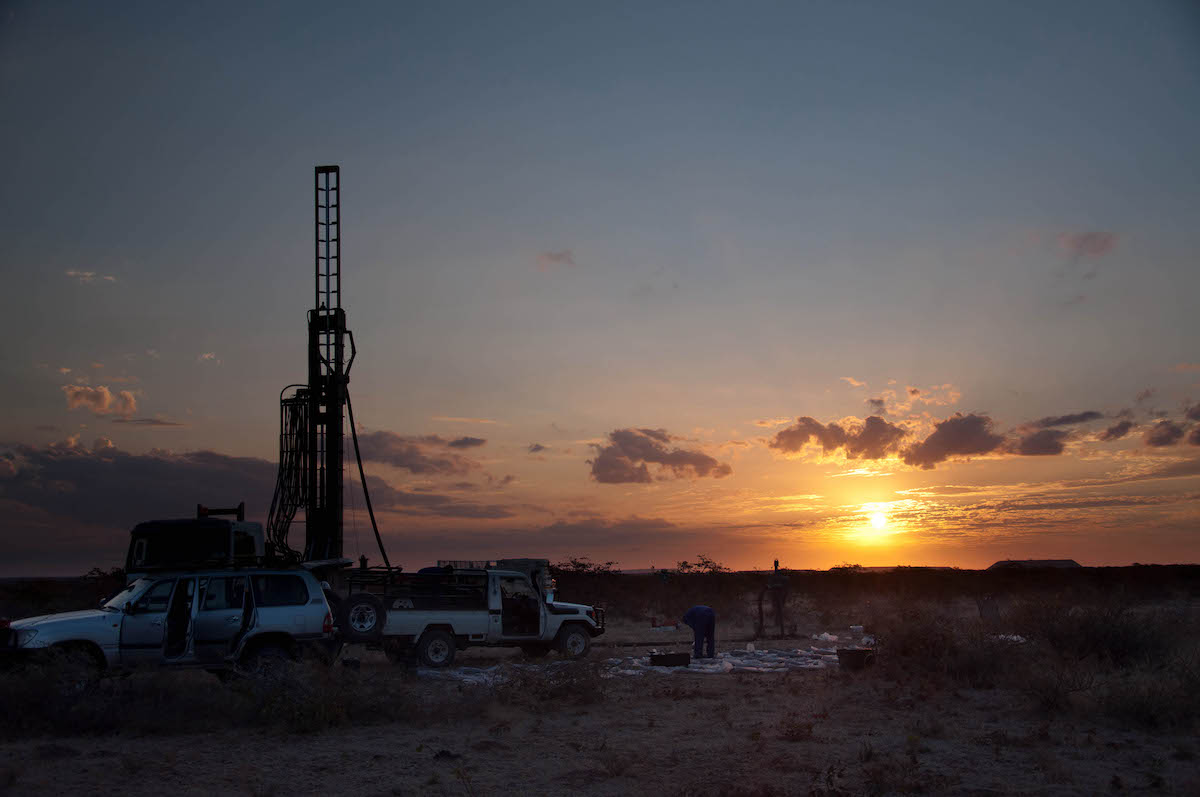
After selecting an area, the goal is to find kimberlites. One approach is to take small samples of sediment at earth’s surface to look for the mantle-derived indicator minerals mentioned above. Detailed knowledge of the nature of the sediment is crucial to designing and interpreting such a survey. If the sediment is glacial till, for example, the samples might be collected in a grid pattern and the finding of any indicator minerals will require knowledge of how glaciers moved and deposited sediments over time. When successful, it is possible to pick up an indicator mineral “train” and trace it back to the source kimberlite it was eroded from. A kimberlite with a high content of indicator minerals derived from the diamond stability field is desirable.
A second approach is to look for kimberlites using geophysical methods, relying on the fact that kimberlites tend to have distinct physical properties compared to the other rocks surrounding them. For example, an airplane or helicopter can be flown over the area with special instruments to measure small changes in the magnetic field to map out anomalous rock types and geological structures. Depending on the nature of the area, exploration efforts may employ a systematic combination of geophysical methods and sampling for indicator minerals.
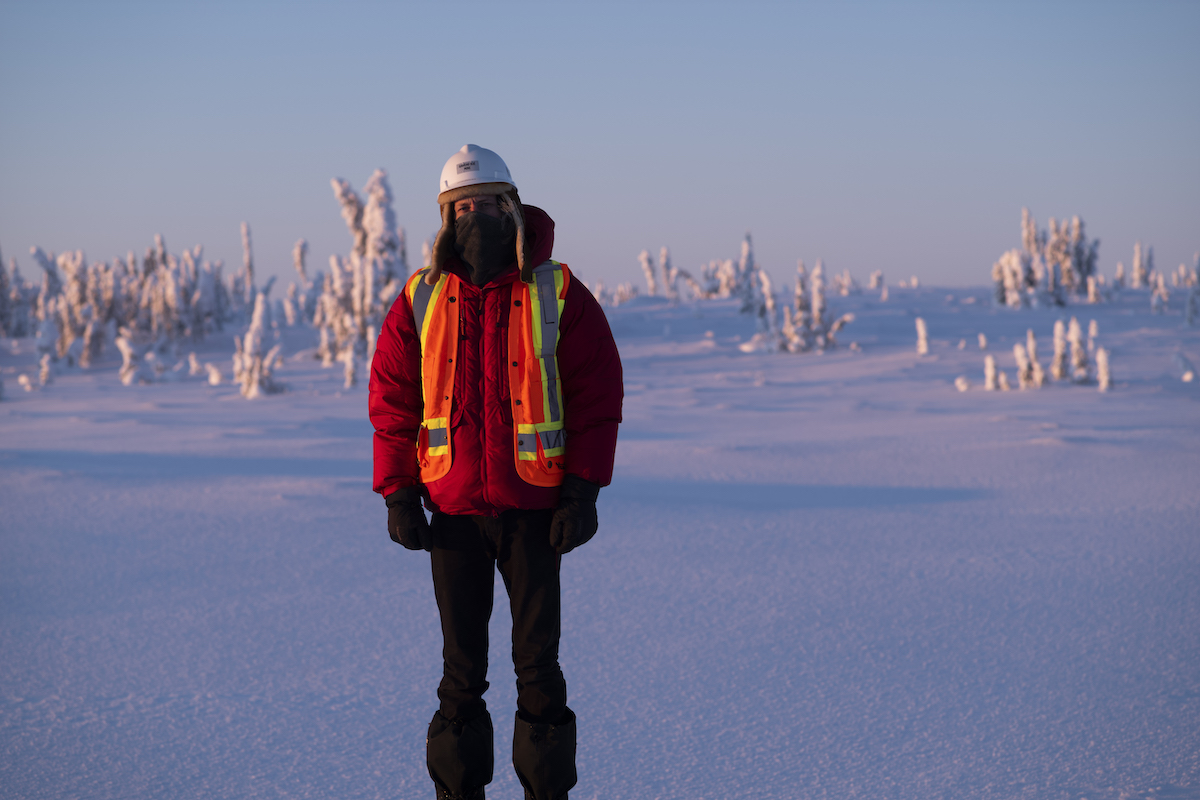
Finding kimberlites is exciting, but not all kimberlites contain diamonds. In order to be economically viable as a mine, there is a minimum threshold of diamond content, both in terms of the number of carats per tonne of kimberlite (grade) and the total amount of extractable kimberlite (tonnage). Diamond size and quality also influence the evaluation. As shown below in a small parcel of diamonds from a single deposit, there can be wide variations in diamond characteristics and therefore value. These are just the some of the aspects involved in assessing whether or not mining would be profitable. In the majority of cases, the conclusion is that mining would not be profitable. Although there are a few thousand known kimberlites around the world, fewer than 100 are subject to current, planned, or past diamond mining activity. As existing deposits are mined and eventually exhausted, there is an ongoing challenge to find, evaluate, and develop the next generation of diamond deposits.
